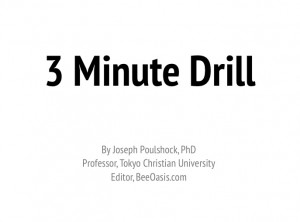*Presentation at the JALT Pan-Sig on May 18, 2013, at Nanzan University, Nagoya Japan.
Research supports the claim that extensive reading (ER) helps improve all language skills. Yet in spite of the research, teachers still experience problems when they try to put ER into practice.
One serious problem is getting students to do the “extensive” part of ER. If we are lucky, students may enjoy the reading part, but to make real linguistic gains, they need to do the extensive part. And just how can teachers motivate students to read more?
Students may read more if required to read for at least 3 minutes daily. This “three-minute drill” serves as a prompt for students to read for more than three minutes, but the key is for them to read for at least 3 minutes daily.
This study looks at a group of 79 Japanese university students who practiced the three-minute for the last 40 days during the fall term of a two term academic year. Reading word count totals for the fall term were compared with the spring term when students did not do the drill. The researcher theorized that students would read more during the fall when they did the drill.
The data is correlational. Other explanations exist for why students might read more when doing the drill. But this study indicates that the three-minute drill may increase reading. This success supports the need for more research and discussion about how to improve this technique that may increase student reading and thus help improve their linguistic skills.
Note: Due to the availability of data, this presentation varied slightly from the original proposal given to the Pan-Sig. During 2013, other variations of this research deal with different data sets, comparisons, and variations of the 3-Minute Drill.

